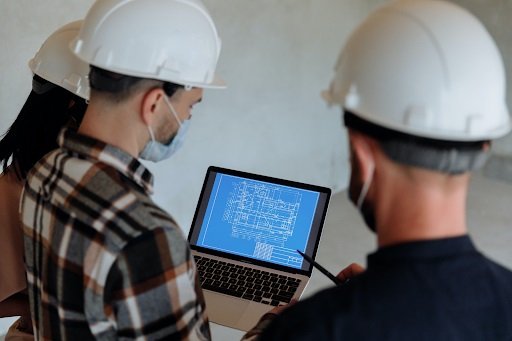Introduction
Are you a business owner looking to purchase or rent a commercial building? Have you been considering having an inspection done before making the move? Whether it’s your first time renting or buying or you’ve done this before, having commercial building and pest inspections can bring immense peace of mind. It can help protect your future investment by spotting potential hazards such as structural damage, mold growth, and pests. Keep reading for helpful guidance on key areas to focus on during these inspections.
Areas for Commercial Building Inspections
During a commercial property inspection, it’s essential to focus on various key areas to ensure the property’s safety, structural integrity, and compliance. Here are the top seven areas to concentrate on during the inspection:
- Structural Components:
During a commercial building and pest inspection, there are several essential structural components that professionals focus on to ensure the safety and integrity of the building. Firstly, they pay close attention to the foundation, examining it for any signs of cracks or settlement issues that could compromise its stability. Additionally, inspectors thoroughly inspect the walls, beams, and columns for any signs of damage, such as water stains or wood rot. They also examine the roof for leaks or damage and assess its overall condition. Electrical systems are checked meticulously to identify any faulty wiring or potential fire hazards.
Furthermore, plumbing systems undergo scrutiny to detect leaks or clogs that may lead to mold growth or water damage. Lastly, pest inspectors diligently search for any signs of termite infestations or other pests that could cause significant damage if left untreated. By focusing on these key areas, professionals of Boom & Bucket ensure that all structural components are in optimal condition and provide a safe environment for occupants within commercial buildings.
- Plumbing and Drainage Systems:
During a commercial building and pest inspection, it is crucial to examine the plumbing and drainage systems of the property thoroughly. These systems are essential for properly functioning a commercial building, and any signs of damage or malfunction can lead to significant issues down the line. The inspector should pay close attention to the condition of pipes, looking for any leaks, corrosion, or blockages that may cause water damage or affect water pressure. They should also assess the functionality of drains and ensure they are properly connected and free from obstructions. Additionally, inspecting sewer lines is vital to identify any potential health hazards or environmental concerns. Adequate maintenance and repair of plumbing and drainage infrastructure are critical in preventing costly repairs and ensuring the safety and comfort of occupants in a commercial building. - Electrical Systems:
In commercial building inspection, it is crucial to focus on the electrical systems as they play a vital role in ensuring the safety and functionality of the property. Inspectors should thoroughly examine various areas to assess any potential hazards or deficiencies. One key aspect to consider is the condition of wiring, looking for signs of wear and tear, inadequate insulation, or outdated components that may pose a fire risk. Additionally, inspectors must inspect the distribution panels and circuit breakers to ensure their compliance with safety codes and capacity requirements. It is also essential to evaluate the grounding system to verify if it is properly installed and functioning effectively. Any exposed wiring or junction boxes need scrutiny for potential safety risks. Lastly, thorough checks should be made on lighting fixtures, switches, outlets, and appliances within the property to ensure they meet all necessary standards. By focusing on these areas during an inspection, professionals can identify any electrical concerns that require attention and provide stakeholders with a comprehensive report for informed decision-making. - HVAC (Heating, Ventilation, and Air Conditioning) Systems:
During a commercial building and pest inspection, it is crucial to pay special attention to the HVAC system as it plays a critical role in maintaining a comfortable and healthy indoor environment. The primary areas of focus include assessing the system’s overall condition and inspecting its components such as filters, ductwork, vents, and thermostats for any signs of damage or wear. Additionally, it is essential to check for proper ventilation and airflow throughout the building to ensure optimal functioning. Regular maintenance is key in preventing issues such as poor air quality, mold growth, or inefficient heating and cooling. Conducting a thorough examination of the HVAC system during a commercial building and pest inspection ensures the longevity and performance efficiency of this vital component within any commercial space. - Pest and Termite Infestation:
During a commercial building and pest inspection, specific areas require careful attention when dealing with pest and termite infestations. One crucial area to focus on is the exterior of the building, including its foundation, walls, and roof. These three components serve as potential entry points for pests and termites seeking shelter or food sources. Inspectors should thoroughly examine any cracks, crevices, or gaps in the foundation, as even small openings can provide easy access for pests. Additionally, inspecting the walls for signs of damage such as peeling paint or blistering can indicate a termite presence. The roof should also be closely examined for damaged shingles or loose tiles that could allow pests to enter the building. In addition to the exterior, it is essential to inspect the interior of the structure carefully. Key areas include bathrooms and kitchens where moisture buildup is common and attics and basements where pests often seek refuge. By focusing on these critical areas during a commercial building and pest inspection, professionals can identify potential issues promptly and recommend appropriate treatment strategies to mitigate infestation risks effectively. - Safety Features and Compliance:
When conducting a commercial building and pest inspection, it is imperative to pay close attention to the safety features and compliance of the property. This includes analyzing key aspects such as fire safety systems, emergency exits, electrical wiring, and general structural integrity. A comprehensive understanding of local building codes and regulations is crucial in order to determine whether the commercial premises comply with safety standards. Additionally, an inspector should inspect for potential hazardous materials such as asbestos or mold that could pose health risks. Evaluating the overall state of the building’s security systems including surveillance cameras, alarms, and access controls should also be prioritized during this assessment. By focusing on these key areas, inspectors can provide businesses with valuable insights into potential risks or non-compliance issues that need immediate attention in order to ensure a safe working environment for employees and customers alike. - Environmental Hazards:
During a commercial building and pest inspection, it is crucial to thoroughly investigate and identify potential environmental hazards that could pose risks to human health and safety. One key area of focus is the presence of asbestos-containing materials (ACMs) within the building. Asbestos, commonly found in older construction materials, can be extremely hazardous when disturbed or damaged, releasing toxic fibers into the air. The inspector should carefully inspect areas such as insulation, flooring, roofing materials, and pipes for any signs of ACMs. The inspection should also consider potential exposure to lead-based paint or contaminated soil around the property. Both lead and soil contaminants can have severe health effects, especially if ingested or inhaled. By diligently examining these environmental hazards during a commercial building and pest inspection, professionals can help ensure that necessary remediation measures are taken promptly to safeguard occupants’ well-being.
Additionally, it’s essential to document all findings with detailed notes and photographs to have a comprehensive report. If any issues are identified during the inspection, further assessments or expert consultations may be necessary to determine the extent of the problems and the required remediation measures. Hiring a qualified and experienced building and pest inspector is crucial to ensure a thorough evaluation of the commercial property. Building and pest inspection Perth, offers quality commercial inspections. So if you are in that area, consult with them.

FAQs
Why is a commercial building and pest inspection necessary?
A commercial building and pest inspection is essential for a multitude of reasons. Firstly, it helps to identify any existing structural defects or potential hazards within the property. This can range from foundation issues to faulty electrical wiring, ensuring the safety of occupants and preventing costly repairs down the line. Additionally, a thorough inspection also includes a comprehensive pest assessment. Pests such as termites and rodents can wreak havoc on a building, compromising its integrity and causing significant damage to infrastructure and stored goods. A commercial inspection not only detects the presence of pests but also evaluates their extent and eradication requirements. By addressing these issues proactively, businesses can avoid reputational damage, comply with health and safety regulations, uphold occupant well-being, maintain insurance coverage, and preserve their investment’s value in real estate and operations. A professional commercial building and pest inspection is essential for mitigating risks, promoting longevity, and ensuring overall business success.
Who typically conducts a commercial building and pest inspection?
A commercial building and pest inspection is typically conducted by a qualified and licensed professional such as a building inspector or a pest control technician specialising in commercial properties. These professionals have the necessary expertise, skills, and technical knowledge to thoroughly assess the condition of a commercial building and identify any existing or potential issues related to pests or structural flaws. Depending on the specific requirements and regulations of the locality, these individuals may be affiliated with governmental departments or private inspection firms. During the inspection process, they meticulously examine all components of the building including its structure, electrical systems, plumbing, HVAC systems, roof condition, insulation, and other areas susceptible to pest infestation. They also inspect for evidence of termites, rodents, cockroaches, bedbugs, or other insects that could pose health risks or damage property. Overall, hiring a certified professional for commercial property inspections is crucial to ensure that businesses can operate in safe environments free from structural defects and potentially harmful pests.
What are some common issues found during a commercial building and pest inspection?
During a commercial building and pest inspection, several common issues may arise. One frequently encountered problem is structural damage caused by termites or other wood-destroying organisms. These pests can weaken support beams, floor joists, and walls, posing significant safety hazards. Additionally, plumbing issues are often discovered during inspections. Leaking pipes or inadequate drainage systems can lead to water damage and mold growth, compromising the integrity of the building’s structure. Electrical problems are also common findings. Faulty wiring or outdated electrical systems put the building at risk of fire hazards and malfunctions. Furthermore, inadequate ventilation can result in poor air quality and moisture buildup, leading to health concerns like respiratory issues and mold contamination. A thorough inspection will also identify compliance violations with building codes and regulations that need immediate attention for remediation.
Conclusion
As a final summary, it’s essential to understand what areas should be included when performing a commercial building and pest inspection. Checking ventilation, drainage systems, insulation, and air conditioning are just some key criteria to consider going into the inspection. It is also wise to watch for damage to pests such as termites or rodents. Additionally, ensure all legal requirements such as licensing asbestos removal are covered. Quality inspections demand thorough attention to detail and the commitment of time and resources. These steps ensure that your commercial building and pest inspection produces the best possible results.
Autobiography
Eric Reyes is a passionate thought leader, having been featured in 50 distinguished online and offline platforms. His passion and knowledge in Finance and Business made him a sought-after contributor providing valuable insights to his readers. You can find him reading a book and discussing current events in his spare time.

